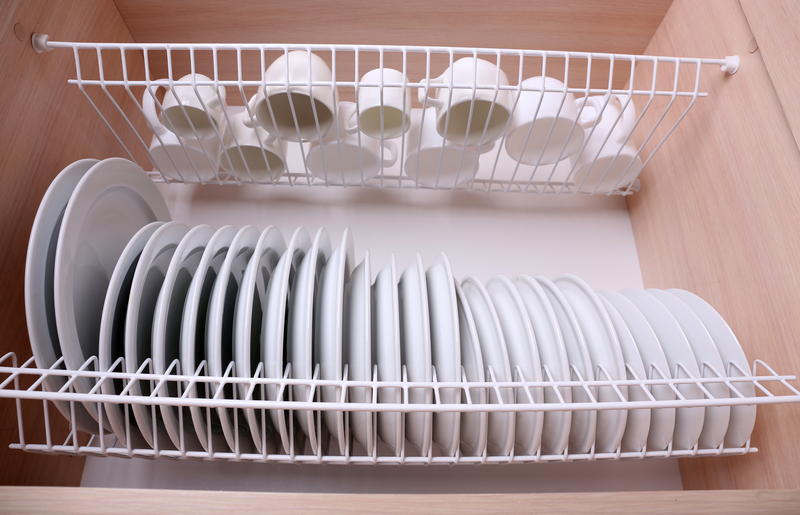Effective Ways to Keep Your Home Dust-Free and Allergy-Friendly
Posted on 27/06/2025
Effective Ways to Keep Your Home Dust-Free and Allergy-Friendly
Living in a dust-free and allergy-friendly home is more than a luxury—it's a necessity for individuals seeking healthy indoor spaces. Protecting your home from dust and allergens goes a long way in improving respiratory health, reducing allergy symptoms, and enhancing overall comfort. Fortunately, with some practical strategies and consistent effort, you can significantly minimize dust and make your home a safe haven for everyone, especially if you or your loved ones suffer from allergies or asthma.
Why It's Important to Keep Your Home Dust-Free
Before diving into effective strategies to reduce dust, it's essential to understand why having a dust-free home matters. Dust is a combination of dead skin cells, hair, pollen, fabric fibers, pet dander, mold spores, and even insect particles. Not only is dust unsightly, but it is also a significant carrier of allergens and can trigger asthma, eczema, hay fever, and other allergic reactions.
- Improved Air Quality: Dust and allergens affect indoor air quality, leading to respiratory issues and discomfort.
- Allergy & Asthma Relief: For those sensitive to dust mites or other allergens, a dust-controlled home can decrease symptoms and flare-ups.
- Cleanliness and Aesthetics: Cleaner homes look better and offer a more comfortable environment to live in.

Identify Dust Hotspots in Your Home
To successfully keep your home dust-free and allergy-friendly, focus on the areas where dust accumulates the most. Knowing where to clean allows you to prioritize your efforts and maximize results.
Common Dust-Prone Areas
- Bedding and Upholstery: These are havens for dust mites, skin cells, and fibers.
- Carpets and Rugs: Fibers trap dust, dirt, and pollen, making them challenging to clean fully.
- Window Sills and Blinds: These often-overlooked spots collect significant amounts of dust.
- Electronics: Screens, PCs, and TVs attract dust due to static electricity.
- Vents and Air Ducts: These distribute dust if not cleaned or maintained often.
- Shelves and Decorative Items: Open shelving and knick-knacks are dust magnets.
Regular Cleaning: Your First Line of Defense
1. Adopt a Consistent Cleaning Schedule
Consistency is paramount when aiming for a dust-free, allergy-friendly home. Rather than waiting for dust to become visible, create a weekly or bi-weekly cleaning routine. This prevents the build-up and makes maintenance easier over time.
- Dusting: Use a damp microfiber cloth to capture, not spread, dust on all surfaces.
- Vacuuming: Invest in a vacuum cleaner with a HEPA filter, which traps microscopic dust particles and allergens.
- Mopping: Use a damp mop on all hard surfaces to remove lingering dust after vacuuming.
2. Deep Clean Fabrics and Upholstery
Textiles accumulate a surprising amount of dust. Wash bed linens and pillowcases in hot water weekly, and don't forget curtains and upholstered furniture. Steam cleaning these items occasionally can also help kill dust mites and remove hidden allergens.
- Use Dust-Mite Proof Covers: Encase mattresses and pillows for added protection.
- Launder Throws and Decorative Pillows: Don't ignore accessories, as these gather dust too.
3. Eliminate Clutter
Clutter collects dust, plain and simple. Minimize items on surfaces and store things in closed cabinets or boxes. This not only makes cleaning easier but reduces the overall amount of dust in your home.
Upgrade Your Air Quality: Filtration and Ventilation
4. Use High-Quality Air Purifiers
Investing in a good air purifier, especially those with HEPA filters, can significantly reduce the amount of airborne dust and allergens in your living space. Place purifiers in commonly used rooms like bedrooms or the living room for maximum effectiveness.
- HEPA Filters: Capable of trapping extremely fine particles, including dust mites, pet dander, and pollen.
- Activated Carbon Filters: Helpful for removing odors and some allergens.
5. Maintain Your HVAC System
Your home's heating, ventilation, and air conditioning system can spread dust if not properly maintained. Change air filters regularly—ideally every one to three months. Have air ducts professionally cleaned if dust build-up is visible or allergies persist.
6. Embrace Natural Ventilation
Opening windows during low-pollen periods can help circulate fresh air and push out dust-laden, stale air. However, keep windows closed on high pollen days or if you live in a dusty area.
Choose the Right Materials and Decor
7. Opt for Hard Flooring Over Carpets
When possible, choose hardwood, laminate, or tile flooring. Carpets are notorious for trapping dust, pollen, and pet dander, making them difficult to keep truly clean. If you must have rugs, select low-pile versions and wash them frequently.
8. Select Easy-to-Clean Furniture
Upholstered furniture is a dust magnet. Instead, consider leather, vinyl, or tightly woven fabric that can be wiped down easily. Avoid tufted or ornate furniture, as intricate designs harbor more dust.
9. Minimize Textiles and Decorative Accessories
Limit the number of decorative pillows, throws, and curtains in your space to reduce surfaces where dust can settle. Choose washable fabrics whenever possible.
Avoid Bringing in New Allergens
10. Control Pet Dander
Pets are wonderful companions but can introduce additional allergens. Brush and bathe pets regularly, and keep them out of bedrooms or allergy-sensitive areas whenever possible. Use pet-specific HEPA filters and vacuum often if you share your home with furry friends.
11. Remove Shoes Indoors
Wearing shoes indoors brings in outside dust, pollen, soil, pesticides, and a host of allergens. Maintain a "no shoes" policy inside the house and provide slippers or shoe storage at entryways.
Smart Cleaning Techniques for a Dust-Free Home
12. Dust From Top to Bottom
Always start dusting from the highest surface—shelves, cabinets, ceiling fans—and work your way down. That way, dust falls onto areas that have not yet been cleaned, maximizing efficiency.
13. Don't Forget Forgotten Spots
- Ceiling Fans and Light Fixtures: Clean blades and fixtures, which often gather a thick layer of dust.
- Baseboards and Crown Molding: Regularly wipe or vacuum moldings where dust settles.
- Behind and Under Furniture: Move large pieces occasionally to clean the floor beneath and behind.
- Door Frames and Window Tracks: These narrow areas can host significant dust and mold spores.
14. Clean or Replace Filters of Appliances
Many household appliances—such as humidifiers, dehumidifiers, air conditioners, and vacuum cleaners—utilize filters that trap dust and allergens. Clean or replace these filters regularly for optimal function and a healthier, dust-free living space.
Allergy-Proof Your Home: Extra Steps for Sensitive Individuals
15. Use Allergen-Proof Covers and Cases
Protect mattresses, pillows, and box springs with allergy-proof, zippered cases to create a barrier against dust mites. These covers are often made from tightly woven fabric that dust mites cannot penetrate.
16. Manage Household Humidity
Dust mites thrive in high humidity environments. Keep humidity levels in your home between 30% and 50%. Use a dehumidifier, air conditioner, or even houseplants that absorb moisture to maintain ideal conditions.
17. Choose Hypoallergenic Products
From cleaning solutions to bedding, opt for products specifically labeled hypoallergenic and free from dyes or strong fragrances, which can exacerbate respiratory issues.

Eco-Friendly Dust Control Solutions
18. Natural Dusting Alternatives
Consider using a simple mixture of water and vinegar in a spray bottle to assist with cleaning surfaces and minimizing dust without the use of harsh chemicals. Microfiber cloths are highly effective and reusable, reducing waste and environmental impact.
19. Non-Toxic Cleaning Products
Choose green or non-toxic cleaners that won't trigger allergic reactions. Ingredients like baking soda, lemon, and essential oils provide a safer alternative for minimizing dust and cleaning the house.
Summary: A Proactive Approach for a Dust-Free, Allergy-Friendly Home
Keeping your living space free from dust and allergens is a continuous process, but well worth the reward of improved comfort and health. By maintaining a regular cleaning schedule, investing in air-filtering technology, selecting appropriate furniture and materials, and taking measures to minimize the introduction of new allergens, you can create a truly allergy-friendly, dust-resistant home.
- Clean consistently and thoroughly
- Upgrade air filtration and HVAC maintenance
- Reduce clutter and textiles that attract dust
- Adopt lifestyle habits that keep allergens outside
- Use hypoallergenic products for sensitive individuals
With these effective strategies for dust-free living, you'll ensure your home remains safe and comfortable, and allergy symptoms are kept at bay. Remember, a truly allergy-friendly home is achieved through careful choices and consistent action! Start today, and breathe easier in your fresh, clean, and healthy environment.




